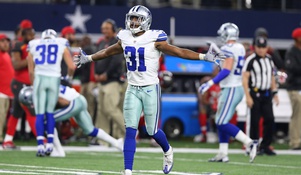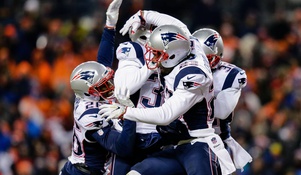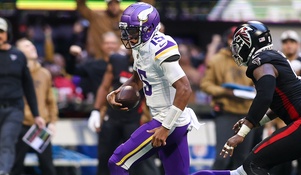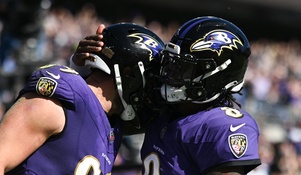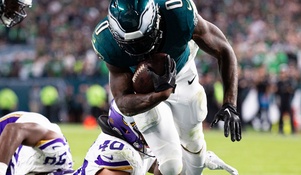What is the Impact of Adrian Peterson's Return on the Vikings?
Adrian Peterson will make his return to the Minnesota Vikings this week who are still in contention for a possible playoff spot. What will his return mean to a Vikings team who came out on fire but has since gone 2-6 in their past 8 games? On the surface, the return of a 31-year-old running back who averaged 1.6 yards per carry this season doesn’t look like much to be excited about, but let’s go beyond the metrics to take a look at Peterson’s full impact.
Most 30 plus year old running backs lack productivity. Especially 30 plus year old running backs coming off major knee surgery. Historically, running backs start to drastically regress starting at age 28. Adrian Peterson isn’t any ordinary running back. Last year at age 30, coming off a year in which Peterson was out of football, he led the league in rushing with 1,485 yards while helping lead the Vikings to an 11-5 record and a division title. This was behind a very shaky offensive line that allowed him to be hit at or behind the line of scrimmage more than any other running back in the league. Simply put, rules for most running backs don’t apply to Peterson.

Things started out a bit differently this year. Simply looking at the numbers, Peterson was terrible. In the 1.5 games before he was injured he ran for 50 yards on 31 carries. The offensive line again was shaky as best and teams were stacking up to 8 in the box to stop Peterson. He didn’t stand a chance at any kind of productivity. Since the injury, the Vikings have lost more offensive linemen to injury than you can even count. At this point, their offensive line is down to one of their opening day starters (Alex Boone), and a number of other mismatched pieces. Upon Peterson’s return, the chances he miraculously runs for 4-5 yards per carry and 100 plus yard games are very slim. In his absence, Jerick McKinnon has only managed 3.0 yards per carry. McKinnon coming into this season averaged 4.9 yards per carry in his career. He didn’t just forget how to run, he just has no help. Peterson is likely to only average about 3 yards per carry upon his return as well, so he doesn’t make the team any better, right?
Wrong. The “Peterson Effect” can’t be measured simply by his numbers. Let’s take a look back to those first 2 games where Peterson ran for a pitiful 1.6 yards per carry. Game 1 was against the Titans with Shaun Hill at quarterback. The obvious game plan for Tennessee was to not let Peterson beat them, and to force Shaun Hill to beat them. They were successful stopping Peterson, often stacking 7 or 8 in the box daring Hill to beat them. While Peterson was consistently stopped, Hill managed to beat them. With the defense so focused on Peterson, Hill was able to connect with top receiver Stefon Diggs for 7 catches and 103 yards. In addition, Kyle Rudolph and Adam Theilen had very productive games and each hauled in a few catches downfield. Even though Peterson wasn’t running the ball well, his presence opened up the passing offense.
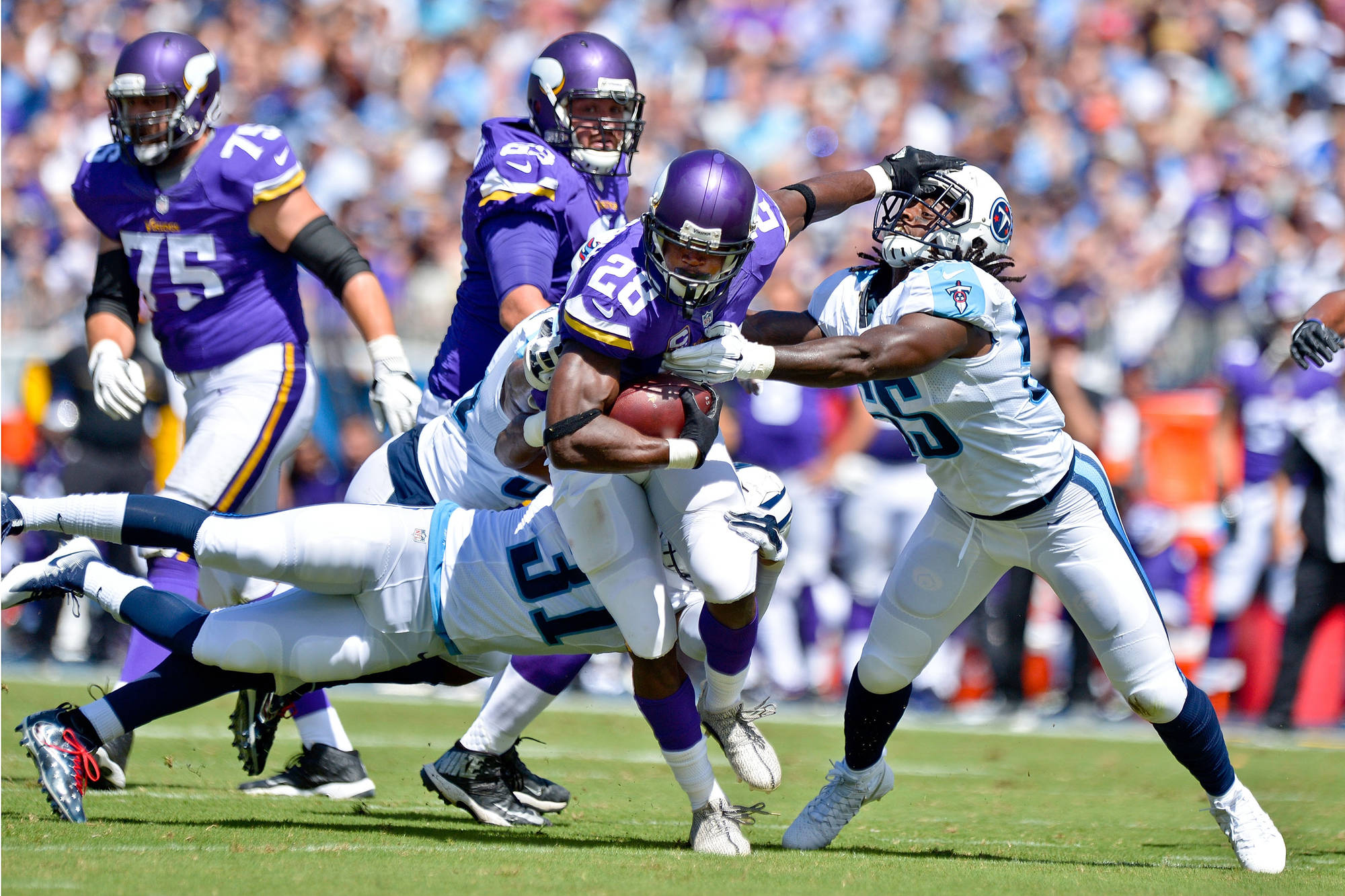
Moving forward to week 2 vs Green Bay, the game plan was obviously to stop Peterson once again. This time, Sam Bradford was making his Vikings debut. Once again, Green Bay often stacked 7 or 8 in the box to stop Peterson, daring Bradford to beat them. With the opportunities available, Bradford had an extremely productive game, connecting with Diggs 9 times for 182 yards. Theilen and Rudolph once again capitalized on a few opportunities, and while Peterson only ran for 19 yards on 12 carries before being injured, the passing game was opened up for Bradford. Bradford had 286 yards passing on 9.6 yards per attempt, as he was able to stand in the pocket and deliver shots down field to open receivers while the defense focused on Peterson.
Since the injury, with McKinnon or Matt Asiata in the backfield, the threat Peterson poses is no longer there. Defenses know Peterson can hit a home run on any carry, and they need to do anything they can to stop that. Without him, defenses have been able to focus more on Bradford and drop more players into coverage knowing they can still stop the run. Since week 2, Stefon Diggs has amassed just 576 yards in his last 9 games after a total of 285 in just the first two. He has become the new focus of the opposing defenses. Bradford has been pretty solid, but has been forced to dink and dunk his way down the field. There is no opportunity for explosive plays or downfield passing. The offense has been stagnant, and it is the biggest reason for the 2-6 slide in the last 8 games.
When Peterson makes his return this week vs the Colts, he will bring with him the focus of opposing defenses. Teams will be geared up to stop him, and it will open up the passing game for Bradford. If defenses don’t respect his ability at 31 years old coming off a knee injury, and are still focused on stopping Diggs, Theilen, and Rudolph, Adrian will be more than happy to show them why he is one of the best running backs in the history of the game.
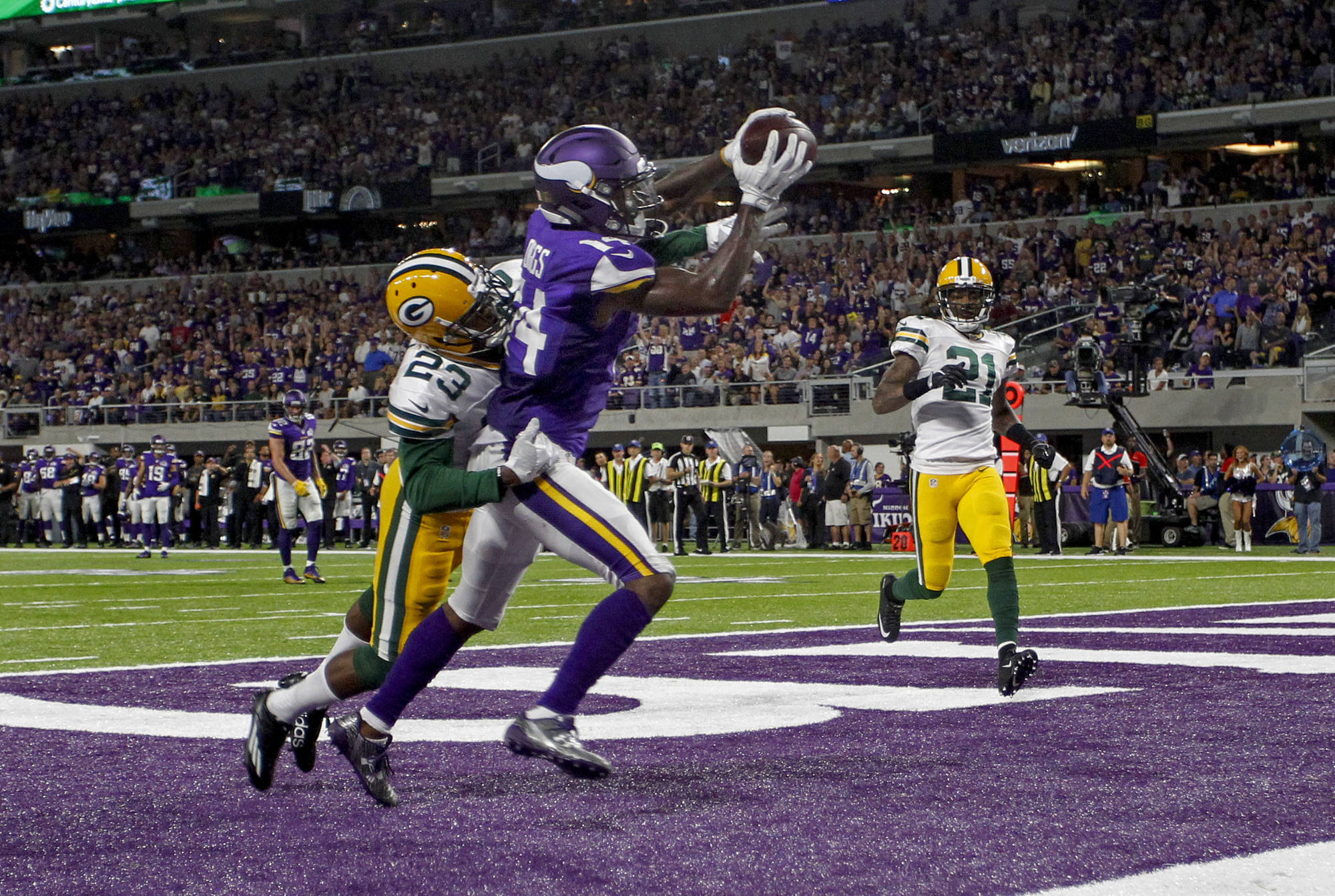
At 7-6, the Vikings will need to win out to make the playoffs, and even at that they will need a little help. Peterson may end up being the boost the teams needs physically and psychologically, or they may continue their slide and fall out of playoff contention with one more loss. This week vs the Colts will provide a better picture of the effect Peterson has on the Vikings. If they win they can go into their Christmas Eve matchup with the Packers with some momentum and confidence. With a loss, their season is over.
How do you think the Vikings season will turn out? Will Peterson be able to help carry the Vikings into the playoffs? Or is his return all going to be for nothing this season? Comment and let us know! Stay tuned for more current sports stories. Don't forget to follow us on social media. You can find us on Facebook, Instagram @beyondthemetrics, and Twitter @byondthemetrics.



